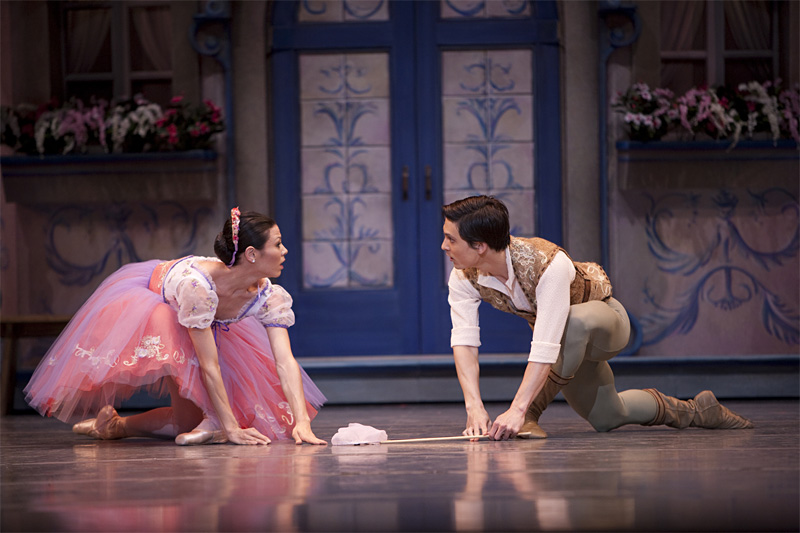Pacific Northwest Ballet has been promoting its new production of Coppélia as a charming family show for months now, and it is indeed a pretty thing, with its ornamented porcelain sets and wisteria-toned costumes by Roberta Guidi di Bagno. But underneath all the scenic beauty and the fairy-tale story is a double-barreled ballet that nods to its early-19th-century roots while it challenges its 21st-century cast. Even the corps de ballet of 24 children, dressed like the “petit rats” that Degas painted at the Paris Opéra, complete with the little ribbons around their necks, have adult-level work to do during the “Waltz of the Golden Hours” in the last act.
Like most historic works in the ballet repertory, this version of Coppélia is a pastiche, a conglomeration of elements that may come from the original choreography with a palimpsest of reworked material and outright substitution. George Balanchine, trained in Russia’s Imperial School before his career as an iconoclastic choreographer, collaborated with his former schoolmate and partner Alexandra Danilova, and between their memories and his “improvements,” they staged a work that looks older than it is.
The narrative action, which tells the improbable story of a young man torn between a spunky girl and a beautiful doll, has the stately quality of traditional ballet mime. But the big ensemble sections and virtuosic set pieces all show the hand of Balanchine—they are faster and fleeter, more complex and dense.
The main roles in Coppélia require almost as much acting as dancing, and need performers comfortable with the arcane sign language that is ballet mime, alongside more contemporary narration. The opening-night cast of Kaori Nakamura and Jonathan Porretta as the young lovers—and PNB director Peter Boal in a guest appearance as the scheming dollmaker Dr. Coppelius—seemed to relish the “talking” as much as the dancing. Porretta in particular took a great deal of satisfaction in telling Boal that he was “a devil,” complete with hooked fingers to his forehead for horns. They showed the same zest in dancing—Porretta and Nakamura both started their time at PNB with strong technique, but have really sharpened their skills over the past couple of years.
Unfortunately, Nakamura injured herself on opening night and won’t be returning to the production. Lesley Rausch and Jerome Tisserand stepped up at the last minute to cover for Nakamura and Porretta in the Saturday matinee in a performance that was a personal best for each.
Mara Vinson, third of the five women dancing the lead role of Swanilda, had a more relaxed interpretation, her upper body almost floating along as her legs zipped through the steps. Sadly, these will be Vinson’s last regular appearances with the company; she departs this month. Like Porretta, James Moore rose to the challenge of the gut-busting Act 3 solo, with its series of multiple air turns alternating with pirouettes.
The last act, something of a happy-ending free-for-all, includes a handful of exquisite solos and one gobsmackingly bizarre ensemble dance. On the beautiful side, Liora Reshef was a serene leader for the “Golden Hours” waltz, and in the “Spinner” variation, Chalnessa Eames was as sophisticated as her black-and-white, New Look–inspired costume. In contrast, “War and Discord” is an odd addition to the act, which is supposed to illustrate the hours of the day. Despite that confusion, it’s a roaring piece of dancing, full of clashing spears and passing aggression, that clears out quickly like a summer storm.








